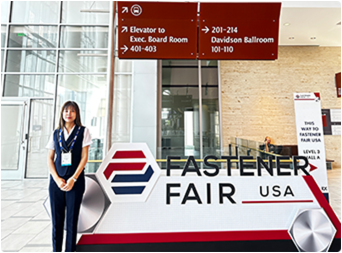Dec . 03, 2024 11:41 Back to list
steel threaded
Understanding Steel Threaded Fasteners The Backbone of Modern Engineering
Steel threaded fasteners are pivotal components in contemporary engineering and construction, serving as fundamental elements that secure various structures and mechanisms together. From towering skyscrapers to intricate machinery, these fasteners play a critical role in ensuring stability, safety, and efficiency. This article delves into the properties, types, applications, and advantages of steel threaded fasteners, highlighting their significance in various industries.
Properties of Steel Threaded Fasteners
Steel threaded fasteners are designed to withstand significant loads and stresses, making them ideal for a wide range of applications. One of their most notable properties is their high tensile strength, which allows them to maintain integrity under pressure. The composition of steel, often alloyed with elements such as carbon, manganese, and chromium, enhances its mechanical properties, resulting in a material that is not only strong but also resistant to wear and corrosion.
Typically, steel fasteners undergo various finishing processes, such as galvanization or coating, to enhance their corrosion resistance. These treatments are essential in environments where moisture or chemicals are prevalent, as they prolong the lifespan of the fasteners and prevent structural failure.
Types of Steel Threaded Fasteners
There are several types of steel threaded fasteners, each designed to fulfill specific functions
1. Bolts Bolts are external threaded fasteners, with a head at one end used to secure objects together by passing through them and fastening with a nut on the opposite side. They come in various sizes and grades, suited for different applications.
2. Nuts Nuts are internally threaded fasteners that mate with bolts to create a secure connection. They are available in several designs, including hex nuts, lock nuts, and wing nuts, each serving unique purposes.
3. Screws Screws can be distinguished from bolts by their threading and are often used to secure objects without the need for nuts. They can be directly driven into materials, making them versatile in construction and assembly tasks.
4. Studs Studs are straight rods with threads on both ends, primarily used where a bolt cannot be applied. They are often found in heavy machinery and automotive applications.
steel threaded

5. Washers Though not threaded themselves, washers are essential components used alongside threaded fasteners to distribute loads, reduce friction, and prevent damage to materials.
Applications of Steel Threaded Fasteners
The versatility of steel threaded fasteners makes them crucial in various industries. In the construction industry, they are used in building frames, bridges, and infrastructure projects, ensuring structural stability and safety. In the automotive sector, threaded fasteners secure engines, chassis, and other critical components, contributing to vehicle performance and reliability.
Manufacturing and machinery also rely heavily on these fasteners for assembling equipment and machinery. They are found in everything from consumer electronics to heavy industrial machinery, underscoring their importance in modern production.
Furthermore, the aerospace industry utilizes high-performance steel fasteners designed to withstand extreme conditions, including high temperatures and corrosive environments, essential for ensuring the safety of aircraft and spacecraft.
Advantages of Steel Threaded Fasteners
The benefits of using steel threaded fasteners extend beyond their strength and durability. Their ease of installation and disassembly allows for efficient maintenance and repair, making them cost-effective solutions for long-term projects. Moreover, standardization of sizes and threading allows for compatibility across various applications, facilitating widespread use.
In addition, advancements in material science and manufacturing processes have led to the development of specialized steel fasteners, such as high-strength and corrosion-resistant variants. This diversity enables engineers to select the most appropriate fastener for specific conditions and applications, enhancing both performance and safety.
Conclusion
Steel threaded fasteners are indispensable components that support countless structures and systems across various industries. Their exceptional strength, versatility, and reliability make them essential for the integrity of modern engineering. As technology continues to evolve, the innovation surrounding steel fasteners will likely advance further, ensuring they remain a critical element of construction and manufacturing for years to come. With their multitude of applications and benefits, it is clear that steel threaded fasteners are indeed the backbone of modern engineering.
-
sleeve-anchor-innovations-that-hebei-yuetong-fasteners-engineering-excellence
NewsAug.22,2025
-
screw-s-precision-engineering-for-global-industries
NewsAug.22,2025
-
hexagon-nut-that-high-quality-fasteners-from-hebei-yuetong
NewsAug.22,2025
-
clamp-that-high-quality-fastening-solutions-from-hebei-yuetong
NewsAug.22,2025
-
bolt-that-reliable-fasteners-from-hebei-yuetong
NewsAug.22,2025
-
anchor-bolt-that-premium-fasteners-for-secure-and-durable-installations
NewsAug.22,2025


